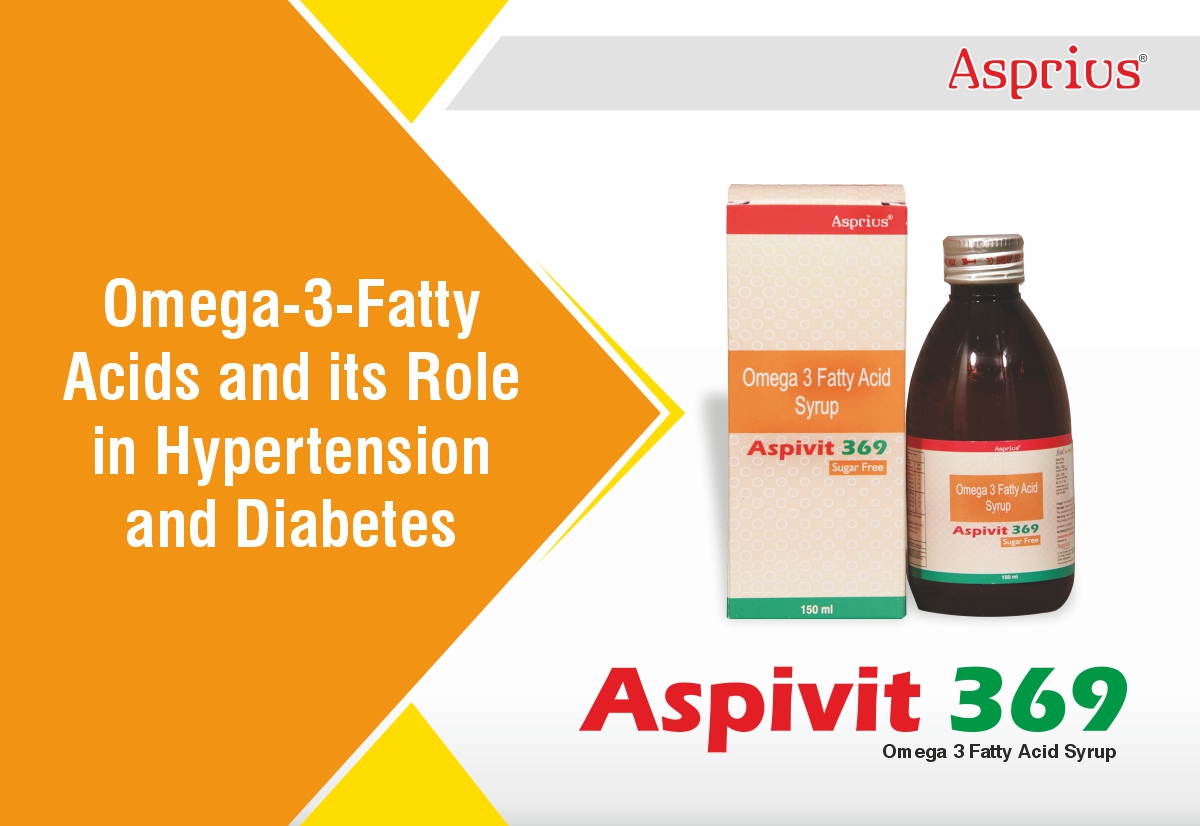
Dr. Sanjay Agrawal
Leading Pharmaceutical consultant and editor-in chief of IJMToday

Omega−3 fatty acids (FA), also called Omega-3 oils, ω−3 fatty acids or n−3 fatty acids, are polyunsaturated fatty acids (PUFAs) characterized by the presence of a double bond, three atoms away from the terminal methyl group in their chemical structure. The three types of omega-3 fatty acids involved in human physiology are α-linolenic acid (ALA) (found in seeds, plant oils, green leafy vegetables, nuts, beans), eicosapentaenoic acid (EPA), and docosahexaenoic acid (DHA) (both commonly found in fish oil that originally come from microalgae that is further consumed by phytoplankton, a source of diet for fish, mainly fatty fish)(Covington, 2004). EPA and DHA are 20, 22-carbon molecules with five and six double bonds respectively. Omega -3 FA cannot be synthesised by mammals and has to be provided through diet. Omega-3 fatty acids are found in foods, such as fish and flaxseed, and in dietary supplements, such as fish oil. Salmon, mackerel, albacore tuna, herring, and sardines are high-fat seafood that are great providers of EPA and DHA.Oils containing these fatty acids originate in plant sources and can be found in fish, fish products, seeds, nuts, green leafy vegetables, and beans(Harris, 2004).
Omega-3 FA are a part of human diet for around thousands of years and have caused no harm in amounts approved by US-FDA. 3g/day is the daily allowance limit of marine omega-3 FA as given by FDA as GRAS (Generally Recognized as Safe). They play a vital role in cardiovascular diseases, asthma, diabetes, inflammatory disorders, arthritis, cancer and various cognitive, behavioural and visual pathways(Harris, 2004).They play a critical role in metabolism and cellular function and they are available as daily supplements.EPA and DHA mediate important cellular functions such as inhibition of platelet function, prolongation of bleeding time, anti-inflammatory effects and reduction of plasma fibrinogen.DHA tends to exist in high concentrations in the retina, brain (via uptake by Mfsd2a as a transporter), and sperm.PUFAs are components of the phospholipids that form the structures of the cell membranes and also serve as energy source. They form eicosanoids which are important signalling molecules with wide-ranging functions in the body’s cardiovascular, pulmonary, immune and endocrine systems.
Mechanism of action
Omega-3 fatty acids mediate anti-inflammatory effects through increased levels of EPA or DHA, which has shown decreased levels of PGE2 and 4 series-LT. EPA compete with arachidonic acid in cell membranes for the same desaturation enzymes and produce 3-series PGs, thromboxanes, and 5-series LT which have low pro-inflammatory potential. The alteration in leukotriene biosynthesis due to higher concentration of omega-3 fatty acids compared to arachidonic acid underlies the anti-inflammatory effects. EPA and DHA also give rise to resolvins and related lipid signalling molecules such as protectins via cyclooxygenase and lipoxygenase pathways, which have anti-inflammatory effects. They inhibit transendothelial migration of neutrophils and inhibit TNF and IL-1β production. Omega-3 fatty acids also decrease adhesion molecule expression on leukocytes and endothelial cells and decrease intercellular adhesive interactions. Omega-3 and their metabolites are natural ligands for peroxisome proliferator-activated receptor (PPAR) gamma that regulates inflammatory gene expression and NF-κB activation. The role of EPA and DHA in reducing triglyceride levels include inhibition of acyl-CoA:1,2-diacylglycerol acyltransferase, increased mitochondrial and peroxisomal-beta-oxidation in the liver, decreased lipogenesis in the liver, and increased plasma lipoprotein lipase activity. They also may reduce triglyceride synthesis because they are poor substrates for the enzymes responsible for TG synthesis. Also, EPA and DHA inhibit esterification of other fatty acids(https://go.drugbank.com/drugs/DB11133).




